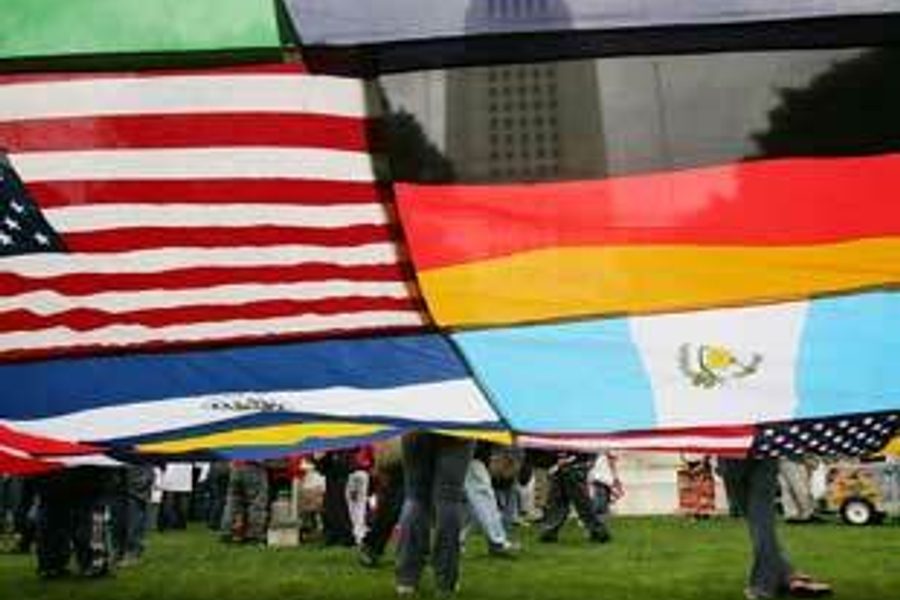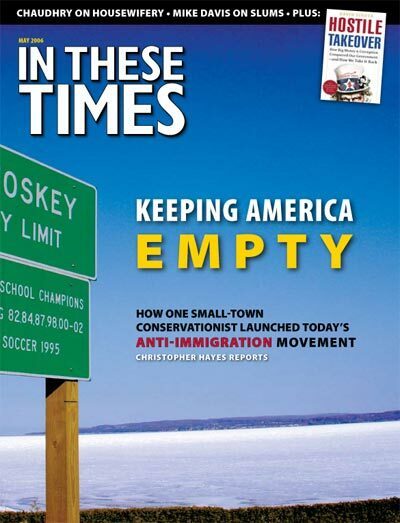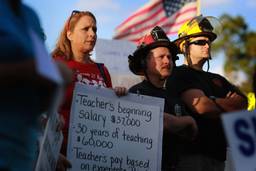
No one knows exactly how it started: fliers, text messages, MySpace bulletins and one code phrase – HR 4437 – circulated throughout schools and cyberspaces over the course of a few days. But the massive student walkouts that occurred between March 24 and 30 were among the largest in California’s history.
Adults observing 40,000 students in Southern California spilling into the streets expressed skepticism. “These kids don’t know anything,” NPR’s Juan Williams told Bill O’Reilly on a March 29 episode of “The O’Reilly Factor.” Other commentators dismissed their actions as truancy.
But the spontaneous eruption of a massive, coordinated walkout was proof that these students, no matter how poor, deprived or English-limited, used technology and networking to make themselves heard. “You know how they say that you have to take action and show what you’re going for in order for them to pay attention to you?” says Brenda Rodriguez, a senior at Wilson High School in East Los Angeles. “That’s exactly what they did. And nationally, everyone did the same thing. I think we were on the right page.”
While traditional progressive organizers are scrambling to coordinate next steps, no formal leaders organized these protests. “I think everybody was a leader because they had to be. Because they stood up for themselves,” says Miguel Lopez, a senior at Garfield High School in East L.A. who walked out.
This newly politicized base is communicating with each other through an extensive and quickly-evolving social digital network.
“It’s like a game, you build up your strength with friends,” says Adrian Avila, a recent community college graduate in San Jose, explaining how word of the walkout spread on MySpace. “So, if you send a bulletin to 1,000 friends, 10 will repost it and then eventually thousands will see it.” Just after the April 10 nationwide immigrant marches, MySpace bulletins were already announcing the nationwide boycott scheduled for May 1. A bulletin called “accionprimerodemayo” (“May 1st day of action”) posted by a student at Silicon Valley Debug, a grassroots, youth-run publication, had been reposted 30 times by the next day.
These new tools are joined to a direct sense of political urgency. “It’s not just their parents that are at risk here,” says Lorena Rodriguez, a senior at Garfield High School. “It might be also them.” The Los Angeles Unified School District does not track how many students are immigrant or undocumented, but 43 percent of the district’s students are learning English.
These students’ sentiments do not drip with the politicized language of eager college activists. Their demand was pragmatic and immediate: putting a stop to bills like HR 4437 – which passed in the House and which would make felons out of undocumented immigrants, their families and anyone else caught within arm’s reach.”We were just right there showing support for our parents,” says Jennifer Lopez, a senior at Manual Arts High School in South L.A., “and showing [that] they can’t try to just sneak up this stupid law on us,”
“I don’t think the moment has passed,” says Los Angeles Mayor Antonio Villaraigosa. “I think these young people are undergoing a transformation.” A participant in the famous Chicano student walkouts in 1968 (celebrated in a recent HBO film, Walkout), the mayor told students that he supported their efforts, but stressed that it was equally important that they succeed in school. “We can’t have you fail,” he said to a group of student leaders he met with after the rally in front of City Hall.
Throughout California, there is an overwhelming sense that the point of this political moment for these students is not the advancement of a theme, but the redefinition of what it means to be an immigrant in the United States. There is genuine excitement about the legitimate force they represent in numbers – and the power that their collective voices have the capacity to wield.
“It was really, really great,” says Miguel Lopez, who dreams of going to University of California, Berkeley, and was born in the United States but has an undocumented sister. “It’s our own kind. It’s the youth actually speaking out and walking, doing this for a change.”





